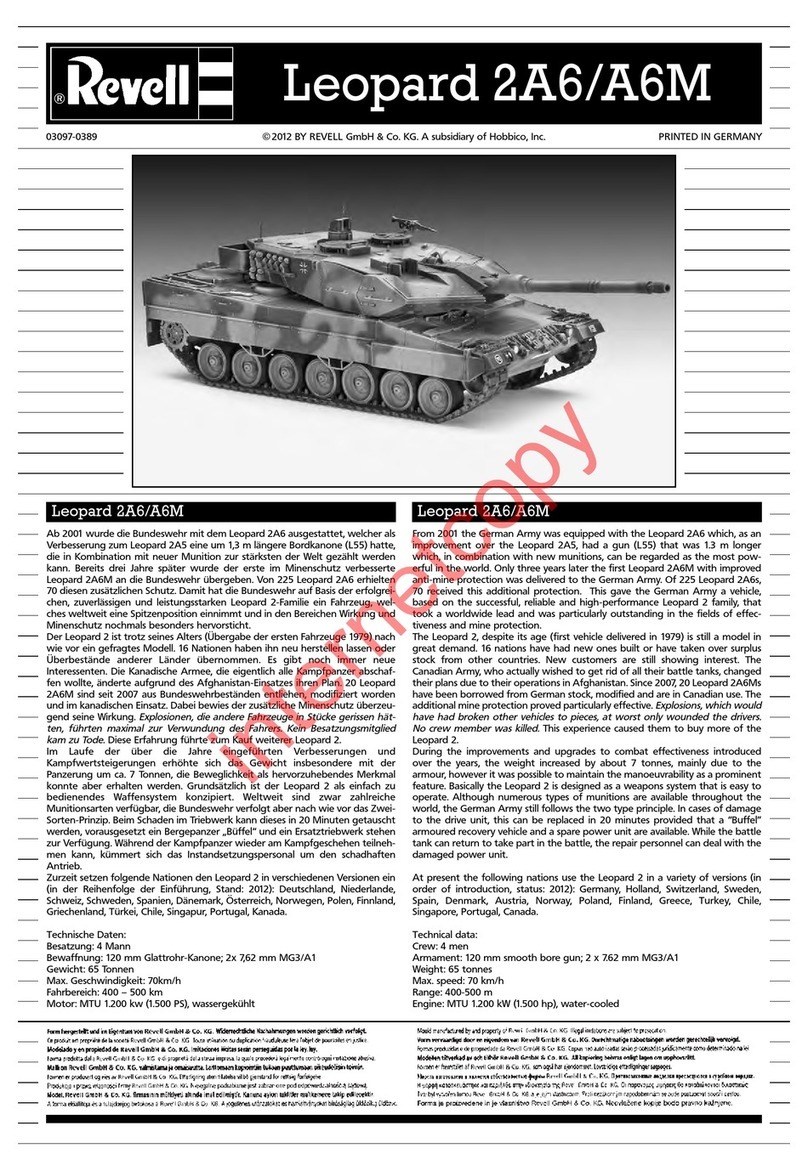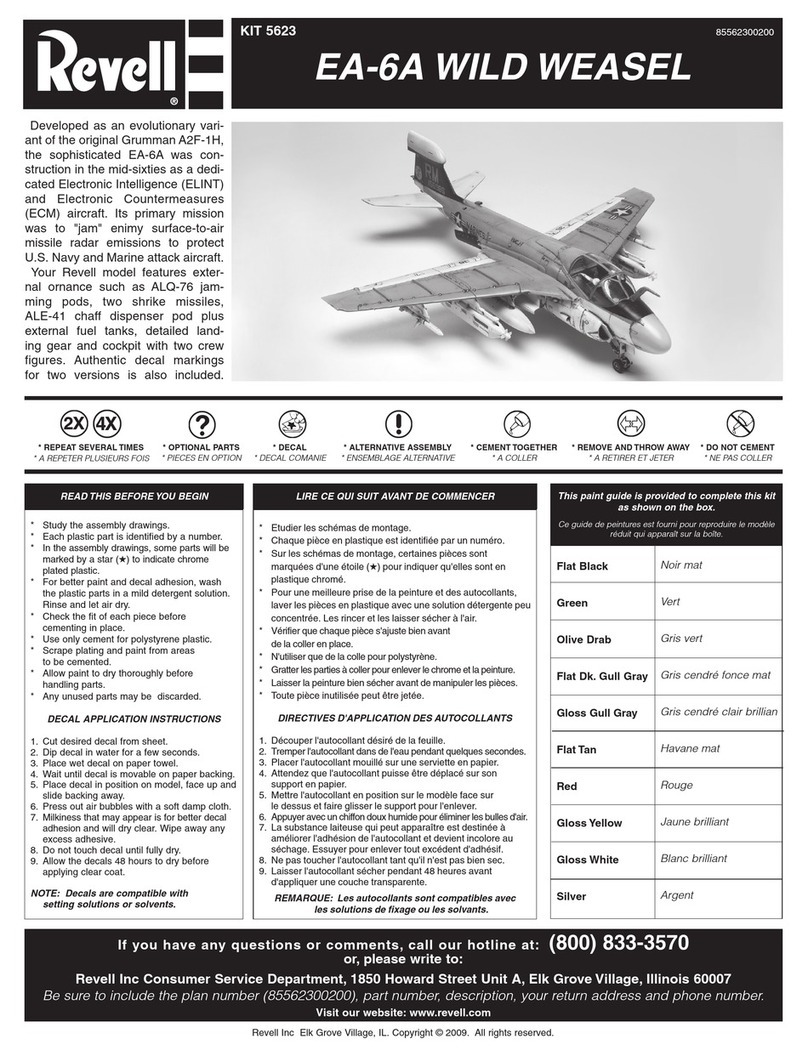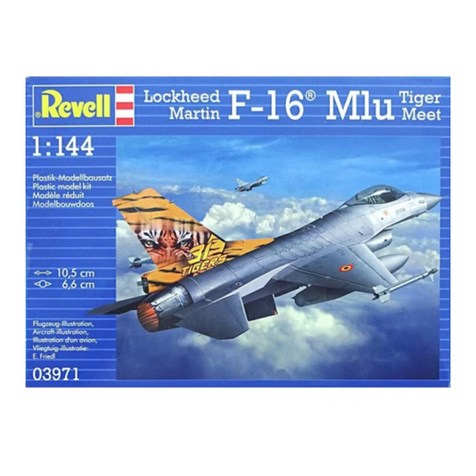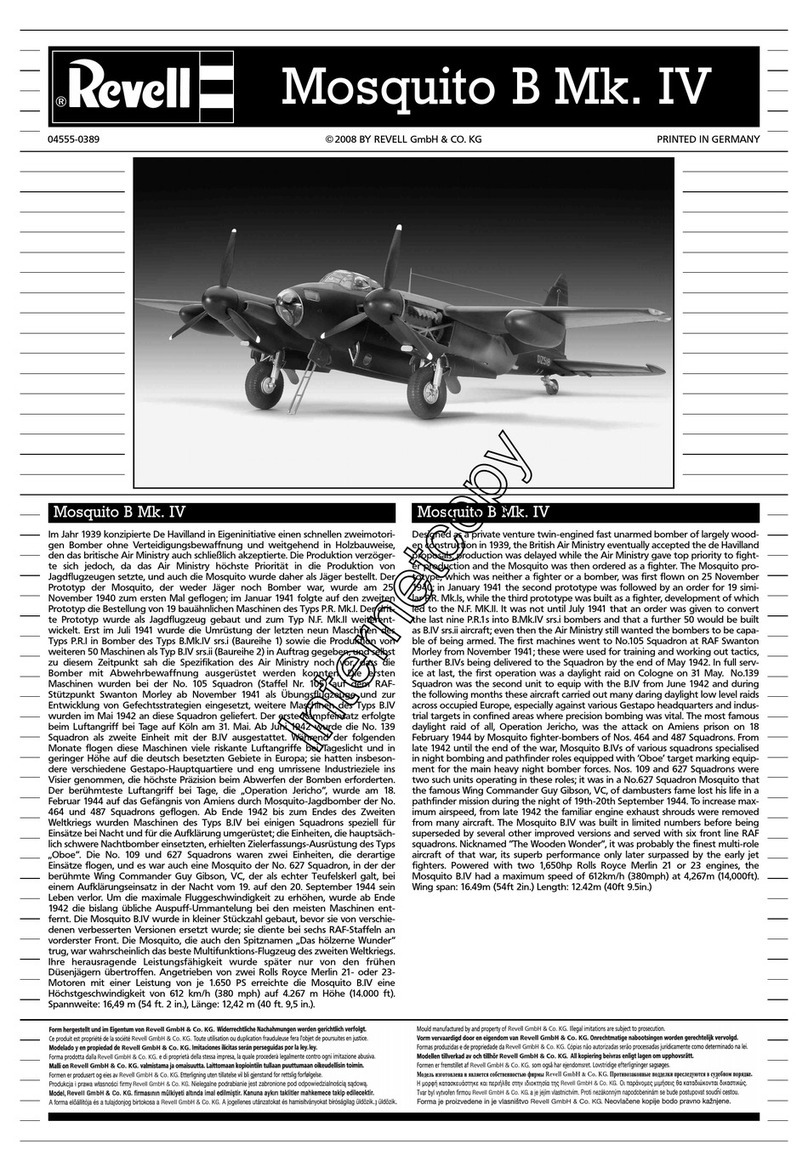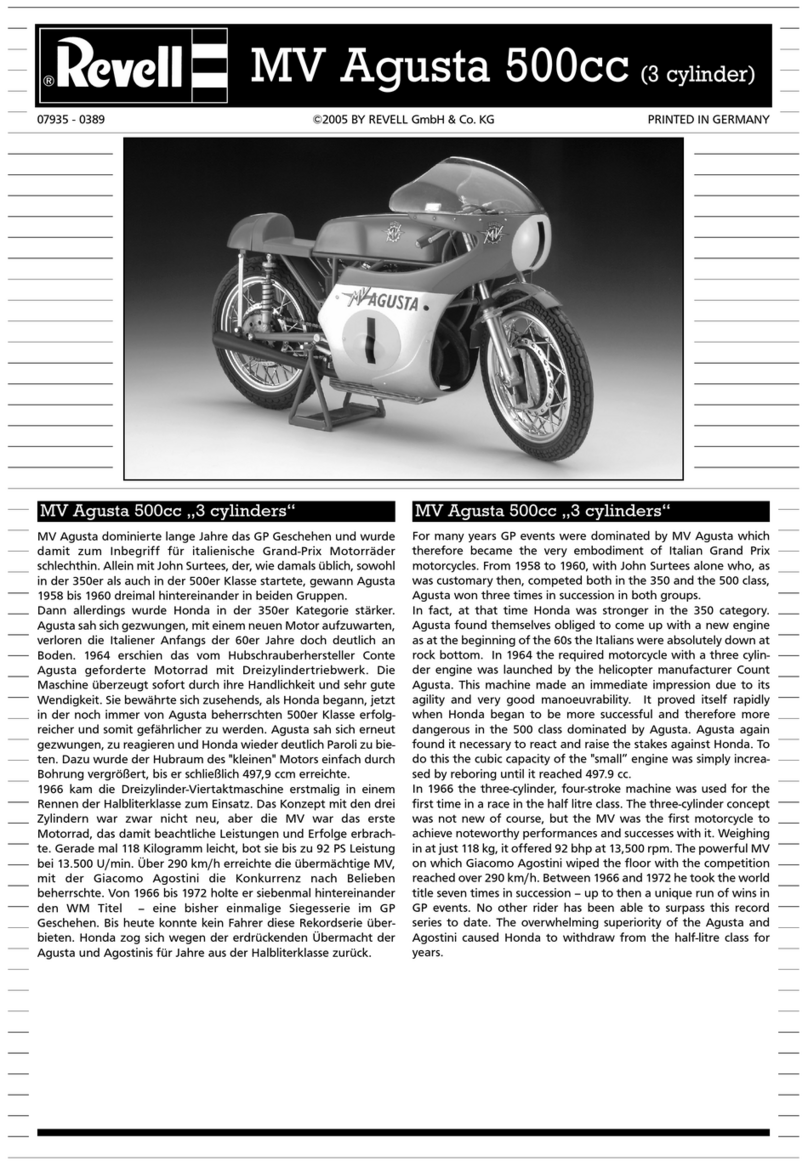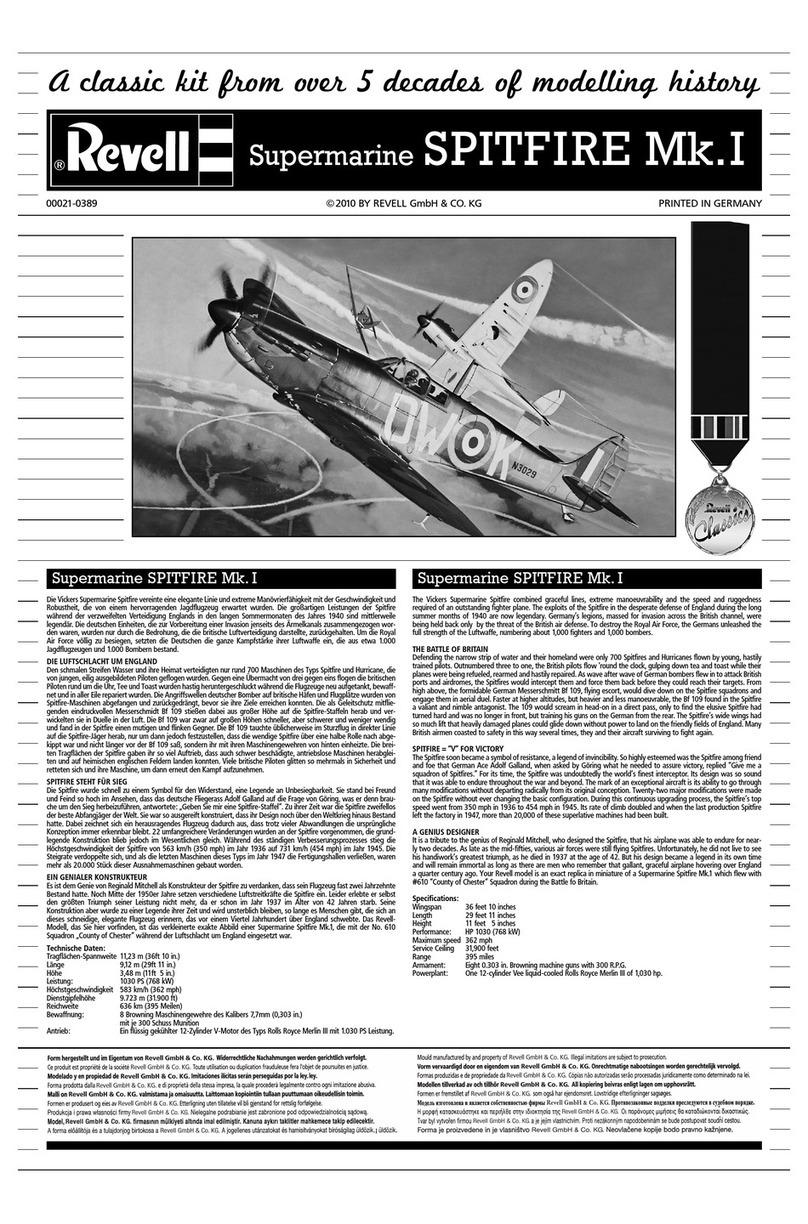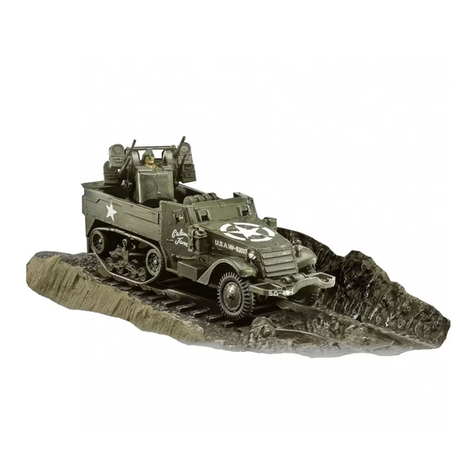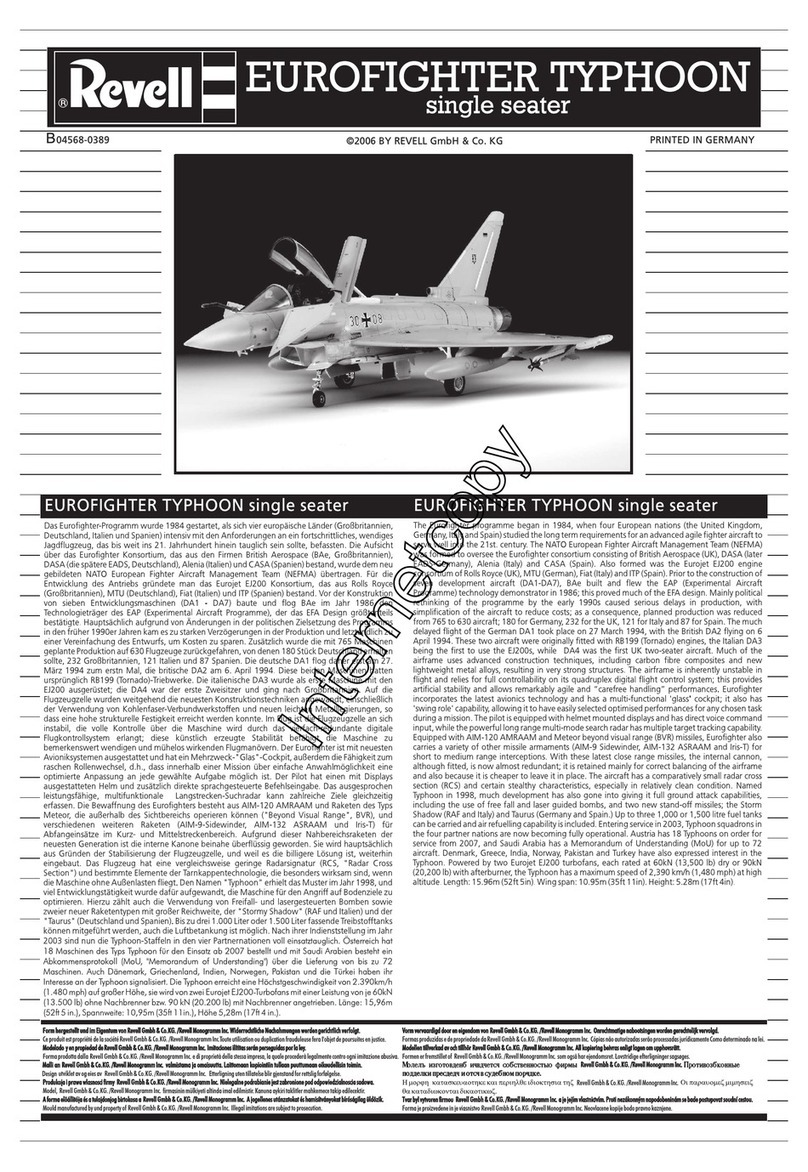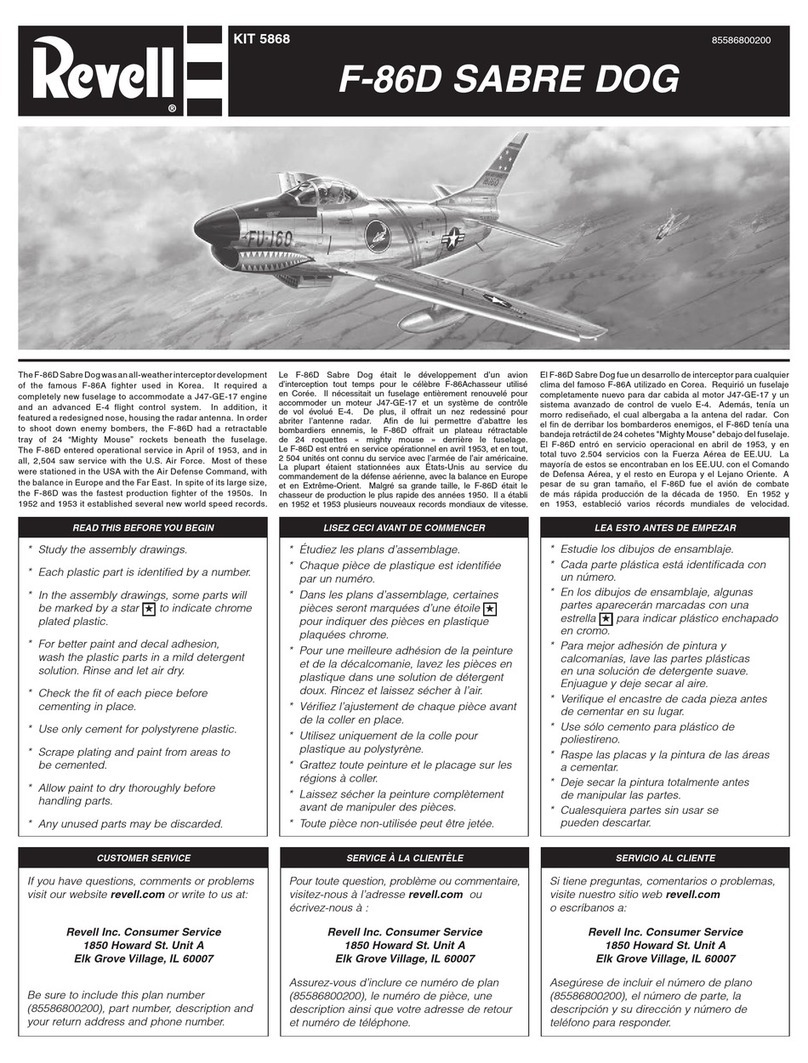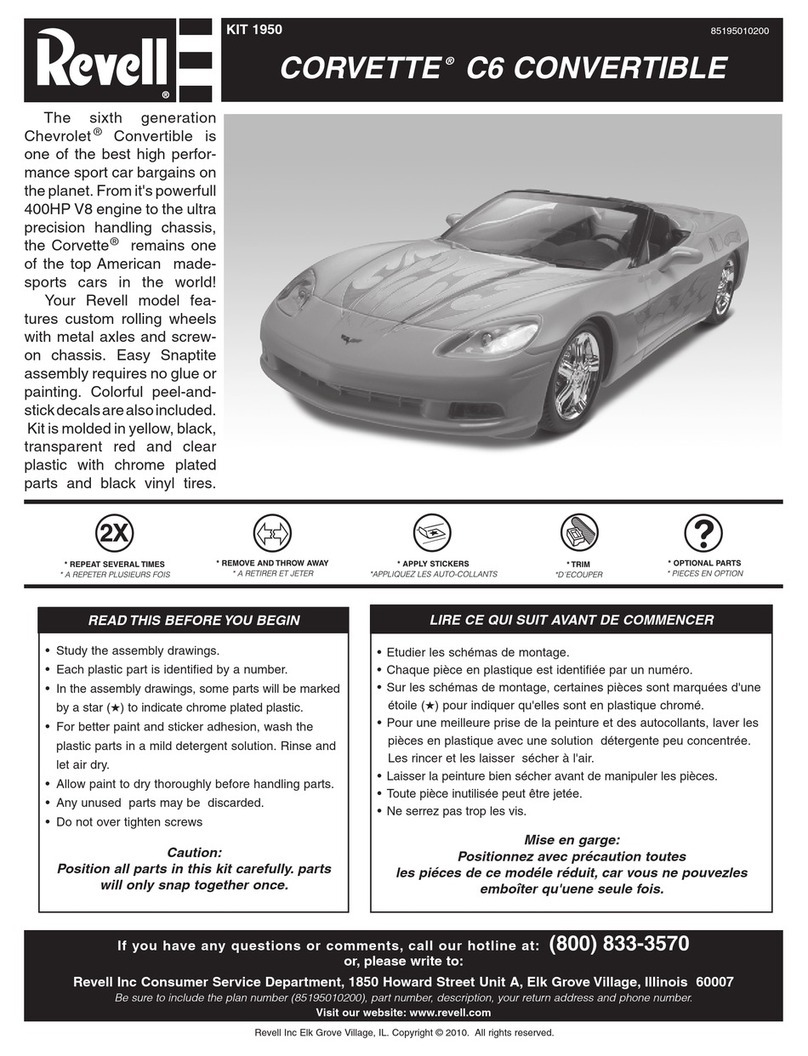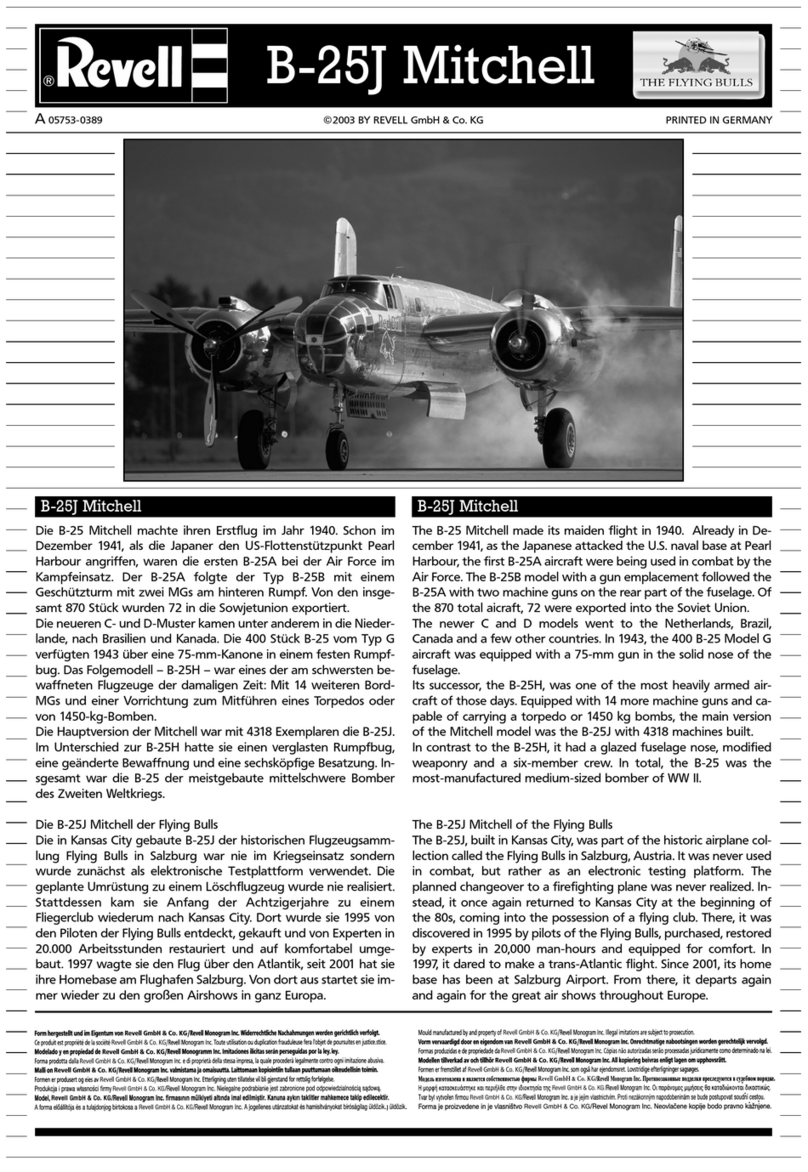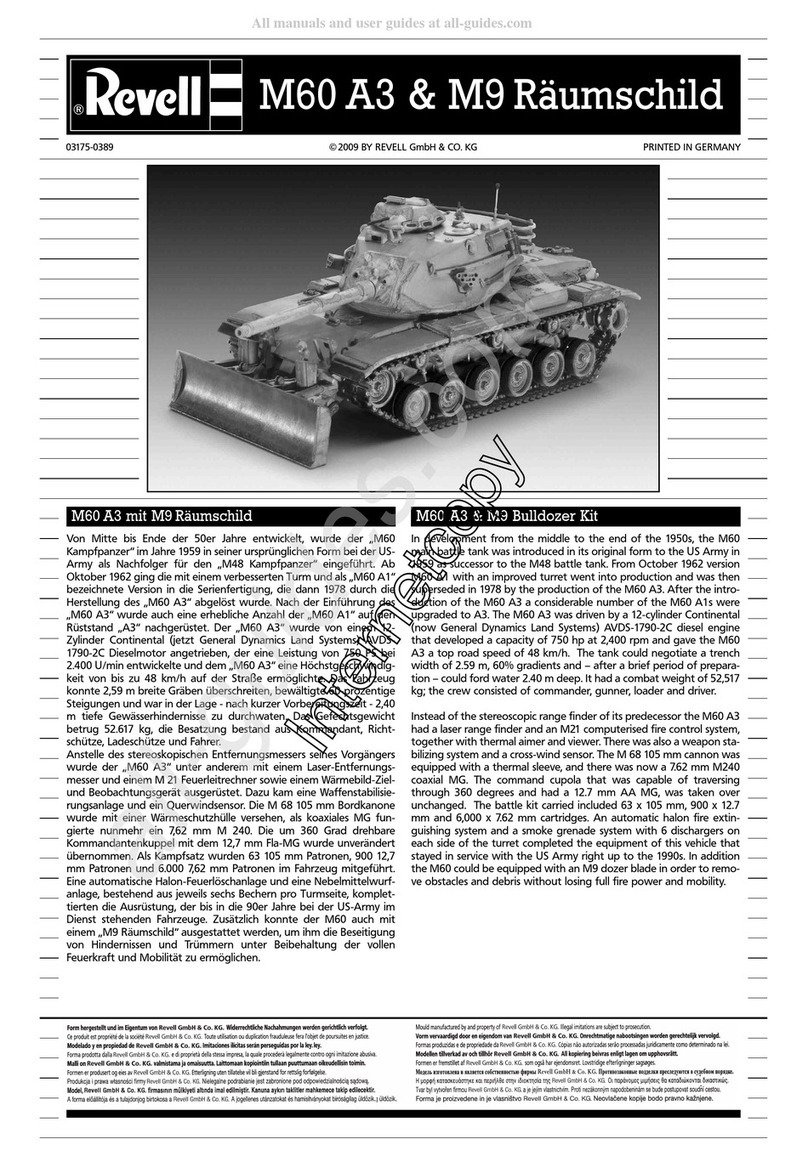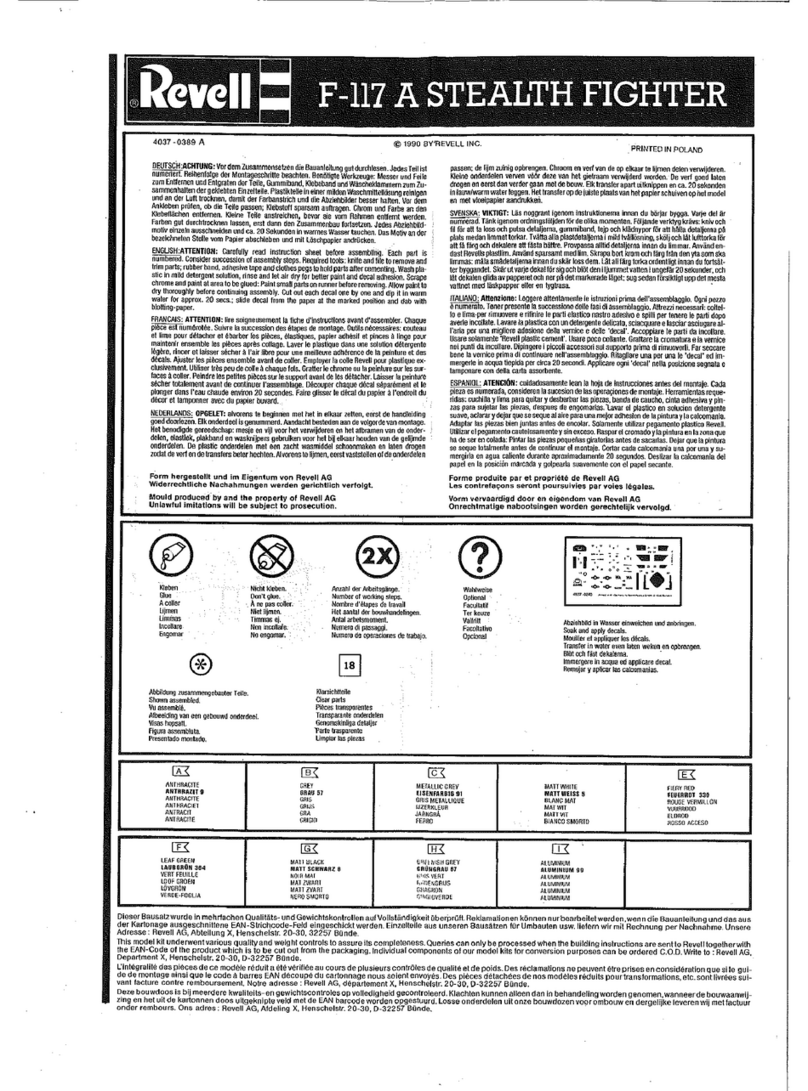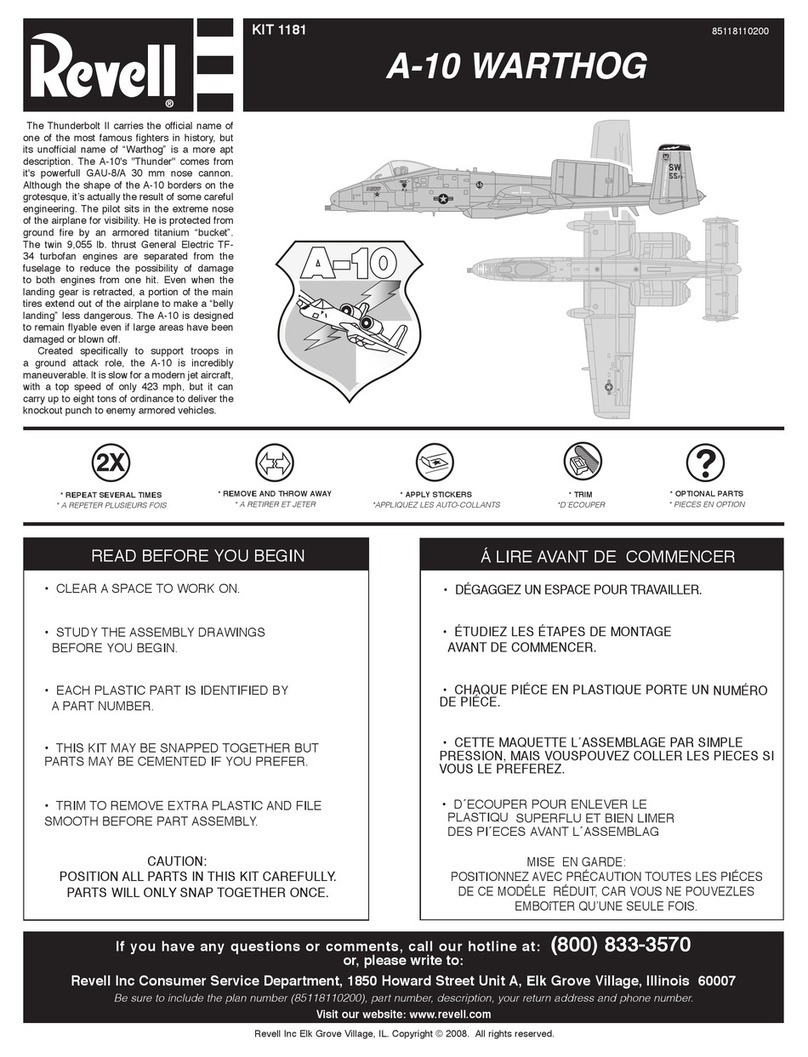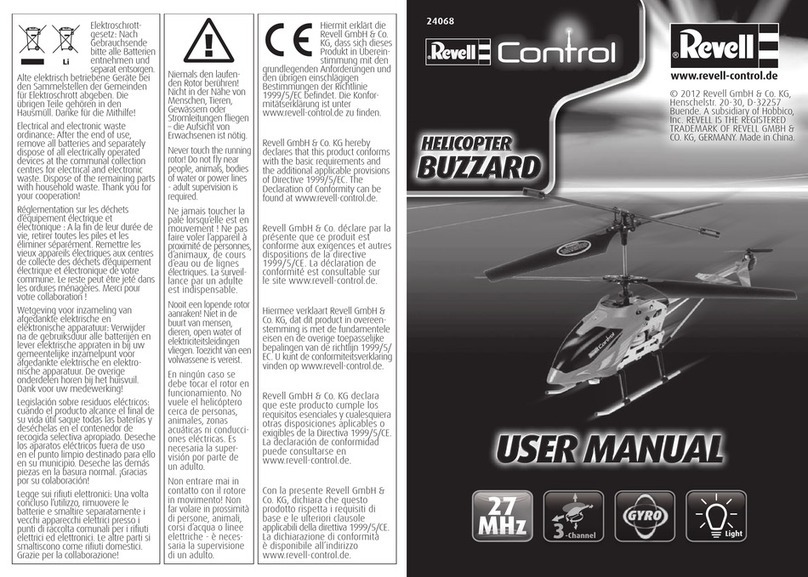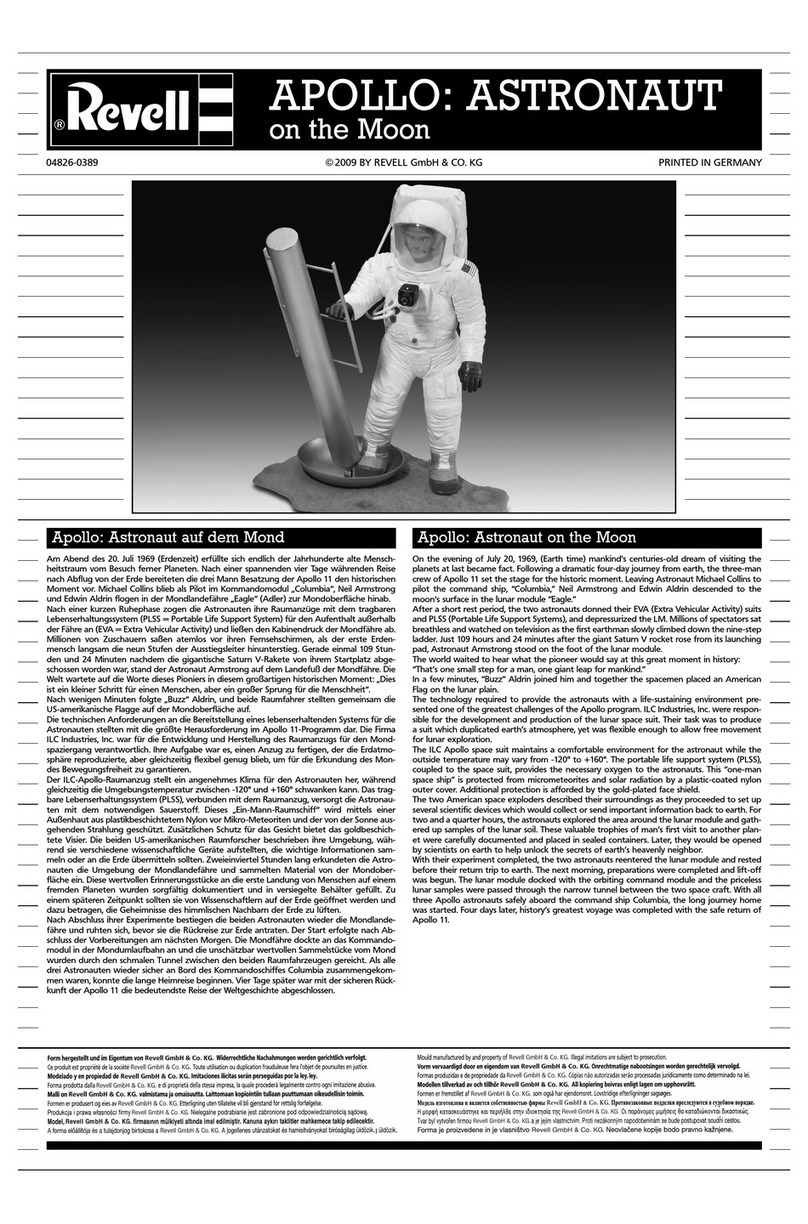®Supermarine Spitfire Mk. IIa
©2014 BY REVELL GmbH. A subsidiary of Hobbico, Inc.03986-0389 PRINTED IN GERMANY
Supermarine Spitfire Mk. IIa Supermarine Spitfire Mk. II a
Die Spitfire war 1937 von R. J. Mitchell, der bei der Supermarine Aircraft
Company tätig war, als Jagdflugzeug entworfen worden. Das Flugzeug
sollte die Spezifikation F.37/34 des Luftfahrtministeriums erfüllen. Der
erste Prototyp flog am 5. März 1936 und beeindruckte sofort alle
Beobachter. Eine erste Bestellung über 310 Spitfires wurde im Juni des
Jahres erteilt. Nach einigen Produktionsverzögerungen kam das erste
Flugzeug bei der No.19 Squadron der Royal Air Force in Duxford im
Juni 1938 an. Diese Mk.I besaß anfänglich einen Zweiblatt-Festpropeller,
der später jedoch durch einen dreiblättrigen Verstellpropeller ersetzt
wurde. Bei Ausbruch des 2. Weltkriegs wurden neun RAF Squadrons
komplett mit Spitfires ausgerüstet. Die erste Feindmaschine wurde
am 16. Oktober 1939 abgeschossen. Zum Beginn der Schlacht um
England im Juli 1940 waren insgesamt 19 RAF Squadrons mit Spitfires
ausgestattet. Mit der Zunahme der Spitfire-Bestellungen wurde die
Produktion auf weitere Werke im Süden Englands erweitert und ein
eigenes großes Werk in Castle Bromwich, nahe Birmingham, errichtet.
Alle 920 Spitfire Mk.II wurden in Castle Bromwich gebaut, ebenso viele
der späteren Marks, die mehr als die Hälfte der insgesamt 20.351 Spitfires
ausmachten. Die ersten Spitfire Mk.II wurden im August 1940 an die RAF
Squadrons ausgeliefert. Sie nahmen im folgenden Dezember an den
Gegenoffensiven in Europa teil (Codename “Rhabarber”). Die Spitfire
Mk.II unterschied sich von der Mk.I durch den stärkeren Merlin-Motor,
die leicht gewölbte Cockpithaube und ein zusätzliches “kugelsicheres”
Glas vorn in der Windschutzscheibe. Spätere Spitfire-Varianten fanden
sich auf allen Schauplätzen des 2. Weltkriegs, zahlreiche überzählige
Exemplare wurden an Luftstreitkräfte in der ganzen Welt verkauft.
Die Spitfire Mk.IIa war als Jagdflugzeug mit acht Browning M1919-
Maschinengewehren bewaffnet. Der 1.150 PS starke Rolls-Royce Merlin
XII Motor verlieh der Spitfire Mk.IIa eine Höchstgeschwindigkeit von
574 km/h in 5.181 m Höhe. Die maximale Flughöhe betrug 11.338 m.
Spannweite: 11,22 m. Länge: 9,12 m
The Spitfire was planned as a private venture fighter by R J Mitchell
of the Supermarine Aircraft Company in 1937. The aircraft proposed
to meet Air Ministry Specification F.37/34 first flew in prototype form
on 5th March 1936 and immediately impressed all who saw it. A first
contract for 310 Spitfires was issued in June that year and after some
production delays the first aircraft reached No.19 Squadron, Royal Air
Force, at Duxford in June 1938. These Mk.I aircraft initially had two-
blade fixed pitch airscrews but these were later replaced by three-
blade variable pitch units. At the start of World War Two, Spitfires fully
equipped nine RAF Squadrons with the first enemy aircraft being shot-
down on 16th October 1939. By the beginning of the Battle of Britain
in July 1940 Spitfires equipped a total of 19 RAF Squadrons. As more
Spitfire contracts were awarded, production was dispersed to other
factories in the south of England and the huge purpose built facility at
Castle Bromwich near Birmingham. All 920 Spitfire Mk.IIs were built at
Castle Bromwich as well as large numbers of later Marks, accounting for
well over half the total of 20,351 Spitfires. The first Spitfire Mk.IIs reached
RAF Squadrons in August 1940 and took part in offensive sweeps
into Europe (code named “Rhubarbs”) in the following December.
The Spitfire Mk.II differed from the Mk.I in having a more powerful
Merlin engine, a slightly ballooned canopy and an extra layer of “bullet-
proof” glass in front of the windscreen. Later Spitfire variants served in
all World War Two combat theatres and many surplus examples were
sold to air forces around the world. Designed for the fighter role, the
Spirfire Mk.IIa was armed with eight 0.303mm Browning machine guns.
The 1,150hp Rolls-Royce Merlin XII engine gave the Spitfire Mk.IIa a
maximum speed of 574km/h (357mph) at 5,181m (17,000ft). Maximum
altitude was 11,338m (37,200ft.). Wingspan: 11.22m (36ft 10in.) Length:
9.12m (29ft 11in.)
Special thanks to „THE OLD FLYING MACHINE COMPANY“ , Duxford Airfield, www.ofmc.co.uk
